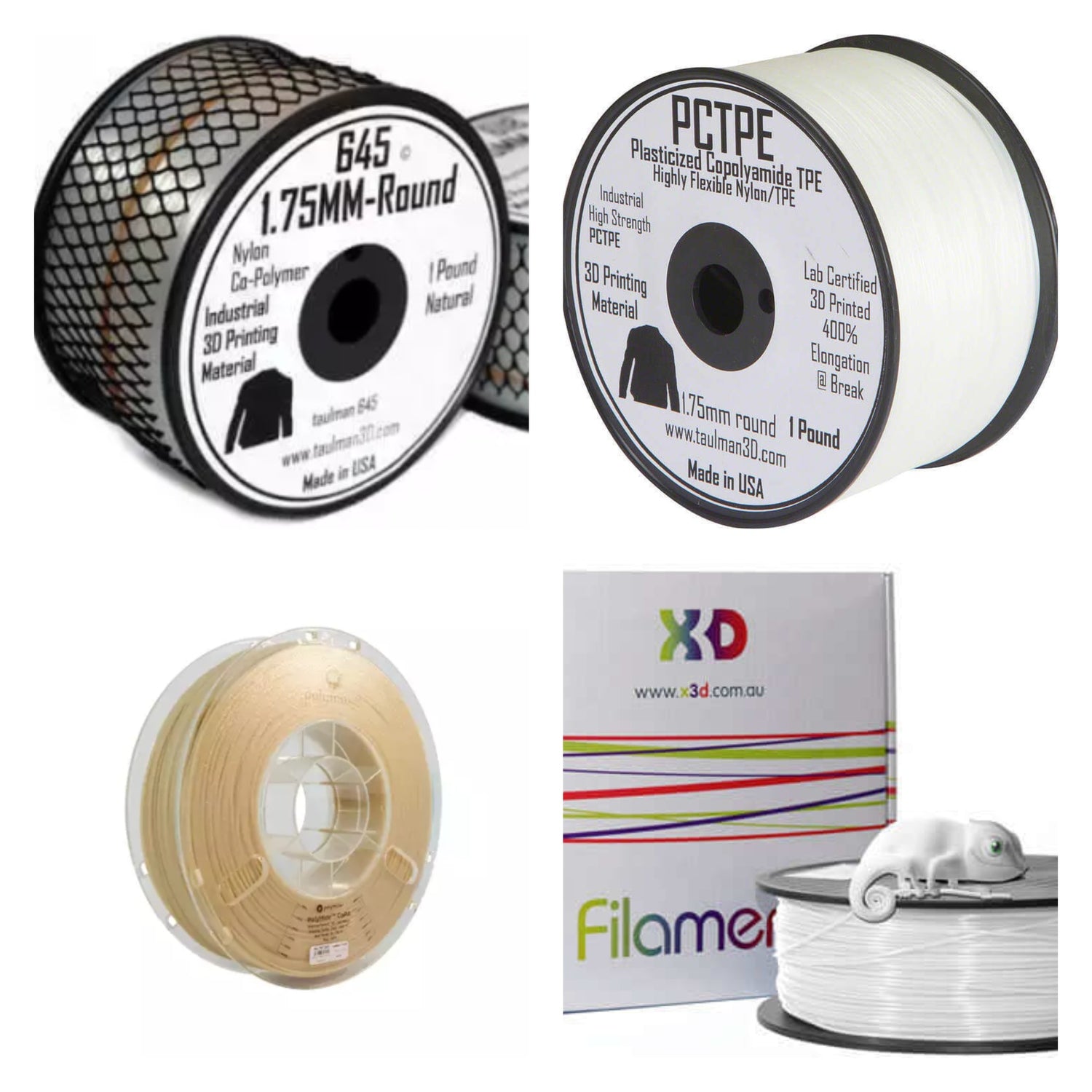
Nylon 3D printer filaments deliver some of the strongest and most resilient 3D prints… as long as they are used successfully.
As we have mentioned before, they are known for their printing issues. It doesn’t matter if you have the best nylon 3D printer filaments or 3D printers, you will encounter troubles if you don’t take the filament’s special traits into consideration while printing. Despite this, people still love using them as they can be pretty amazing if the prints turn out well. Before we get into its printing issues, let’s delve into what makes the nylon filament worth the trouble?
Redeeming Qualities of Nylon 3D Printer Filaments
Nylon 3D printer filaments are the lovechild of PLA and ABS filaments, amplifying everything that is right with the two and fixing all their shortcomings. Whereas PLA is strong yet brittle and ABS is durable yet flimsy, nylon 3D printer filaments are strong AND durable , making them versatile for various applications.
They also display a minimal friction coefficient , which means they can move against each other smoothly without the need for lubrication. This quality makes nylon the perfect filament for high-stress parts such as hinges and gears. Its high melting point allows them to be used for industrial and performance-engineering applications.
Nothing is made perfect, and nylon 3D printer filaments are bound to have a few flaws. What are these and how do we work around them?
Top 2 Problems with Nylon 3D Printer Filaments
Nylon 3D printer filaments are hygroscopic.
Nylon 3D printer filaments absorb water in the air. If they are left lying around, they can absorb up to 10% of its weight in moisture from the air in 24 hours. This could lead to air bubbles in the print which reduces layer adhesion and strength, as well as mattifies the surface finish. However, it can be easily avoided by keeping the filaments in an airtight container with a desiccant. But for those times that we neglect to do that, there are ways to fix your nylon 3D printer filament.
Solution:
- Bake the filament. Dry your nylon 3D printer filament in an oven. Heat it to 160°F – 180°F for 6 to 8 hours. Even 4 hours on a heated bed at 40°C is known to work. After drying, don’t forget to keep the filament in an airtight container.
Nylon 3D printer filaments are prone to warping.
Just like ABS, nylon 3D printer filaments have a high likelihood of warping due to the huge temperature difference between the ambient environment and extruded plastic during printing.
Solution:
- Use an Enclosure during Printing. In order to protect your print from warping, employ a heated enclosure or chamber. It keeps the temperature around the part consistent to 45 ºC.
- Heated bed is also required. A heated bed also helps in some way, although it might not totally bar warping if the environment is too drafty or cool. When using a heated bed, rub a glue stick on the bed in a cross-hatch pattern for adhesion. Ensure that the temperature of the bed is as high as you can go – even up to 120°C for warp-free printing. Don’t forget to turn off the layer cooling fans while printing. Heat the nozzle up to 270 °C and apply tape or high-temperature glue such as DimaFix.
Order High-Quality Nylon 3D Printer Filaments Today
All 3D printer filaments have their own characteristics, and special recommendations. Nylon 3D printer filaments are no exception. If you want to know how to print with nylon 3D printer filaments successfully, check out our guide here. If you want to pick up spools of nylon 3D printer filaments, check out our wide range of collection here. You can also contact 08 6380 7488 for other printing-related inquiries.

